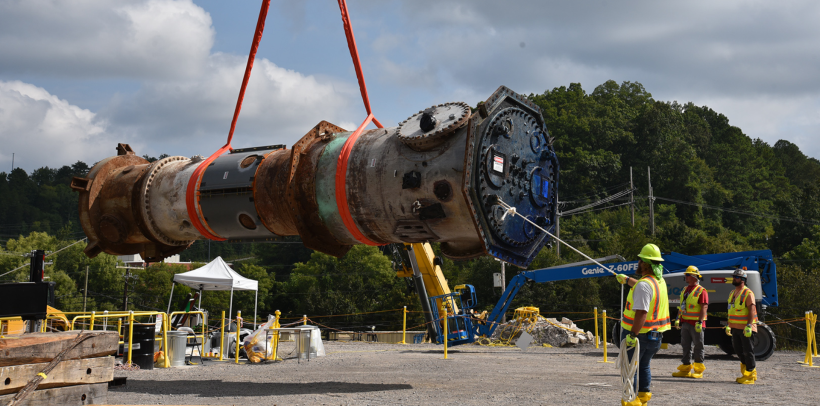OREM manager Jay Mullis (center) discusses the demographics of the current Oak Ridge workforce and the skills needed in the years ahead to advance cleanup at ORNL and the Y-12 National Security Complex. (Photo: DOE)
Federal and contractor officials, community leaders, and educators gathered in Knoxville, Tenn., on October 29 for a roundtable event focused on ensuring the Oak Ridge Office of Environmental Management (OREM) and its partners have the resources and infrastructure needed to support a robust, talented workforce in the years ahead.
Workers prepare to remove from a specialized transportation trailer the first of three sludge-settling tanks for Oak Ridge’s Mercury Treatment Facility. (Photo: DOE)
Workers with the Oak Ridge Office of Environmental Management (OREM) and its contractor UCOR have finished installing the first of three large sludge-settling tanks for the Mercury Treatment Facility at the site’s Y-12 National Security Complex. The tanks, each of which will be 38 feet tall and 15 feet wide with a capacity of 36,000 gallons, provide a visible sign of ongoing progress on the facility where much of the construction has so far been below ground.
Tennessee officials and lawmakers joined Orano representatives to announce Orano’s selection of Oak Ridge as its preferred site for a uranium enrichment facility. (Photo: tn.gov)
On September 4, Tennessee Gov. Bill Lee announced that Orano had selected Oak Ridge as its preferred site to build a “multibillion-dollar” uranium centrifuge enrichment facility. For Tennessee, the announcement underscores Oak Ridge’s draw for nuclear technology companies. For Orano and the nuclear power community, the announcement is another sign the nation is edging closer to adding front-end nuclear fuel cycle capacity.
Construction crews work to erect the platform’s structural framework. (Photo: DOE)
Crews are making significant progress on the construction of the K-25 viewing platform at the Oak Ridge Reservation in Tennessee, the Department of Energy’s Office of Environmental Management announced on August 20. When completed next year, the elevated platform will offer a sweeping panoramic view of the massive 44-acre footprint of the K-25 Building, which once produced enriched uranium used in the weaponry that ended World War II.
The OECD Nuclear Energy Agency’s William Magwood addresses the plenary audience of the 2024 Waste Management Conference in Phoenix. (Photo: WM Symposia)
Waste Management Symposia announced that the theme of next year’s Waste Management Conference (WM2025) will be “Empowering A Sustainable Future—Advanced Technologies, AI, and Workforce Development across the Nuclear Landscape.” To be held in Phoenix, Ariz., March 9–13, the conference will showcase how new technologies and the evolving digital world are transforming the global nuclear landscape, supply chains, infrastructure, and work norms.
Workers begin construction at the Hermes site in Oak Ridge, Tenn. (Photo: Kairos Power)
Earlier today, on a site in Oak Ridge, Tenn., that was formerly home to the K-33 Gaseous Diffusion Plant, Kairos Power marked the start of construction on its low-power demonstration reactor. Named Hermes, the 35-MWt test reactor claims status as the first Gen IV reactor to be approved for construction by the Nuclear Regulatory Commission and the first non–light water reactor to be permitted in the United States in more than 50 years.
The December 1960 issue of NN, which announced plans to build the MSRE, paired with a still image from a 1969 video on the MSRE produced by ORNL.
By late 1960, when the U.S. Atomic Energy Commission authorized plans to build a Molten Salt Reactor Experiment (MSRE) at Oak Ridge National Laboratory, the lab already had about 13 years of experimentation with molten salt reactors under its longest-serving lab director, Alvin Weinberg. The MSRE operated from 1965 to 1969, proving that molten salt reactors could operate reliably, and with alternatives to uranium-235 too.
UCOR employees use a crane to load the Low Intensity Test Reactor vessel for transport to its final disposition location in Clive, Utah. (Photo: DOE)
The Department of Energy’s Office of Environmental Management announced that the 30-foot-long, 37,600-pound reactor vessel from Oak Ridge National Laboratory’s Low Intensity Test Reactor was shipped to EnergySolutions’ low-level radioactive waste facility in Clive, Utah, in late April.
From left, Erik Olds, OREM deputy manager; Jay Mullis, OREM manager; Brandon Bishop, NABTU secretary-treasurer; Sean McGarvey, NABTU president; Ken Rueter, UCOR president and CEO; William “Ike” White, DOE-EM senior advisor; and Jeff Avery, DOE-EM principal deputy assistant secretary.
The Department of Energy’s Office of Environmental Management announced the signing of a project labor agreement (PLA) between Oak Ridge Office of Environmental Management (OREM) contractor UCOR and North America’s Building Trades Unions (NABTU). The agreement, which allows for flexibility in wage increases and other incentives, is expected to help recruit and retain skilled construction trade workers at the DOE site in Tennessee.
Concept art of the planned X-energy helium test facility. (Image: DOE OCED)
The Department of Energy’s Office of Clean Energy Demonstrations issued a final environmental assessment (EA) and finding of no significant impact in February for a cost-shared X-energy project to construct and operate a helium test facility (HTF) in Oak Ridge, Tenn. According to the EA, construction would begin in early 2024 and take X-energy and its contracted partner, Kinectrics, about one year to complete. the facility would then operate for six years, with the possibility of extensions for up to an additional 20 years, to test equipment for a demonstration of X-energy’s high-temperature, gas-cooled reactor technology and also to “serve the reactor community at large as the technology continues to develop and is adopted around the world.”
Oak Ridge crews will begin demolition of the 325,000-sqaure-foot Alpha-2 facility this year, marking the first teardown of a former uranium enrichment facility at Y-12. (Photo: DOE)
The Department of Energy announced that its Oak Ridge Office of Environmental Management (OREM) is moving ahead with a slate of projects this year that will alter the Tennessee site’s skyline, remove inventories of nuclear waste, and complete a major phase of cleanup.
Contaminated soil is loaded in containers for disposal at the Oak Ridge Reservation in Tennessee. (Photo: DOE)
The Department of Energy’s Office of Environmental Management said a new regulatory partnership framework established in recent years by the Oak Ridge Office of Environmental Management (OREM), its contractor United Cleanup Oak Ridge (UCOR), the Environmental Protection Agency, and the Tennessee Department of Environment and Conservation (TDEC) is ushering in a new chapter of accelerated cleanup at the department’s Oak Ridge Reservation in Tennessee.
The Low Intensity Test Reactor structure is lifted from its housing and placed in a specialized carbon metal container for shipment for disposal. (Photo: DOE)
The Department of Energy’s Office of Environmental Management announced it has completed a second of its 2023 priorities at Oak Ridge in as many months with the demolition of the Low Intensity Test Reactor, known as Building 3005, at the Tennessee site.
Watch a video of Building 3005 and its decommissioning here.
Taking part in the Environmental Management Disposal Facility groundbreaking, from left, were Steve Arnette of Jacobs; Mark Whitney of Amentum,; Wade Creswell, a Roane Co., Tenn., executive; Brent Booker of the Laborers’ International Union of North America; Kevin Adkisson of North America’s Building Trades Unions; Jeaneanne Gettle of the EPA; Lt. Gov. Randy McNally; David Salyers of TDEC; Ken Rueter of UCOR; Jay Mullis of OREM; U.S. Rep. Chuck Fleischmann; and DOE-EM’s William “Ike” White. (Photo: DOE)
National, state, and local leaders joined the Department of Energy’s Oak Ridge Office of Environmental Management (OREM) and its lead cleanup contractor, United Cleanup Oak Ridge (UCOR), earlier this month to celebrate the groundbreaking for a new on-site disposal facility at the Oak Ridge Reservation in Tennessee.
Watch a video highlighting the Environmental Management Disposal Facility groundbreaking ceremony here.
The Alpha-2 building at Y-12 in Oak Ridge is a former uranium enrichment facility that dates to the Manhattan Project era. (Photo: DOE)
The Department of Energy’s Office of Environmental Management said that crews have completed major deactivation efforts at the Alpha-2 building at the Y-12 National Security Complex in Oak Ridge, Tenn. The former uranium enrichment facility is scheduled for demolition next year.





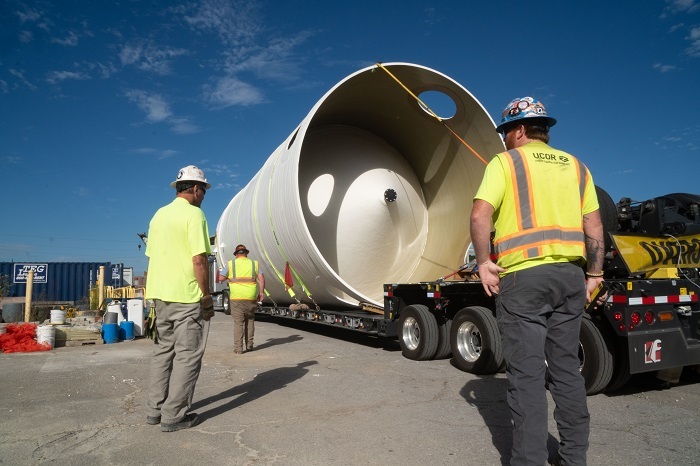




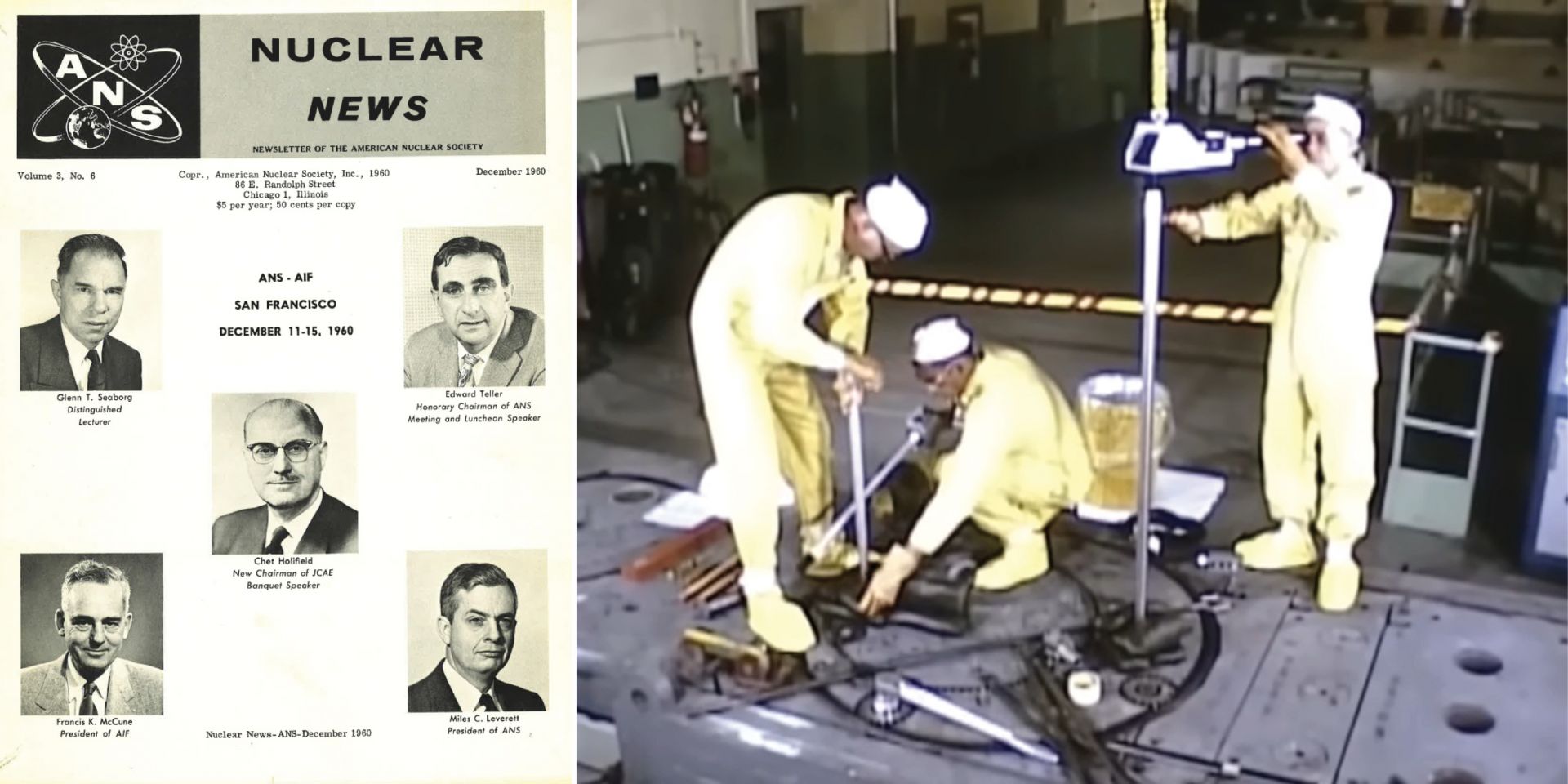
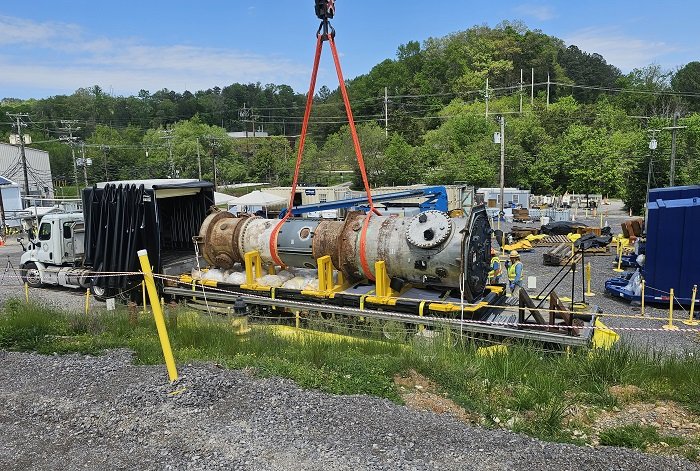


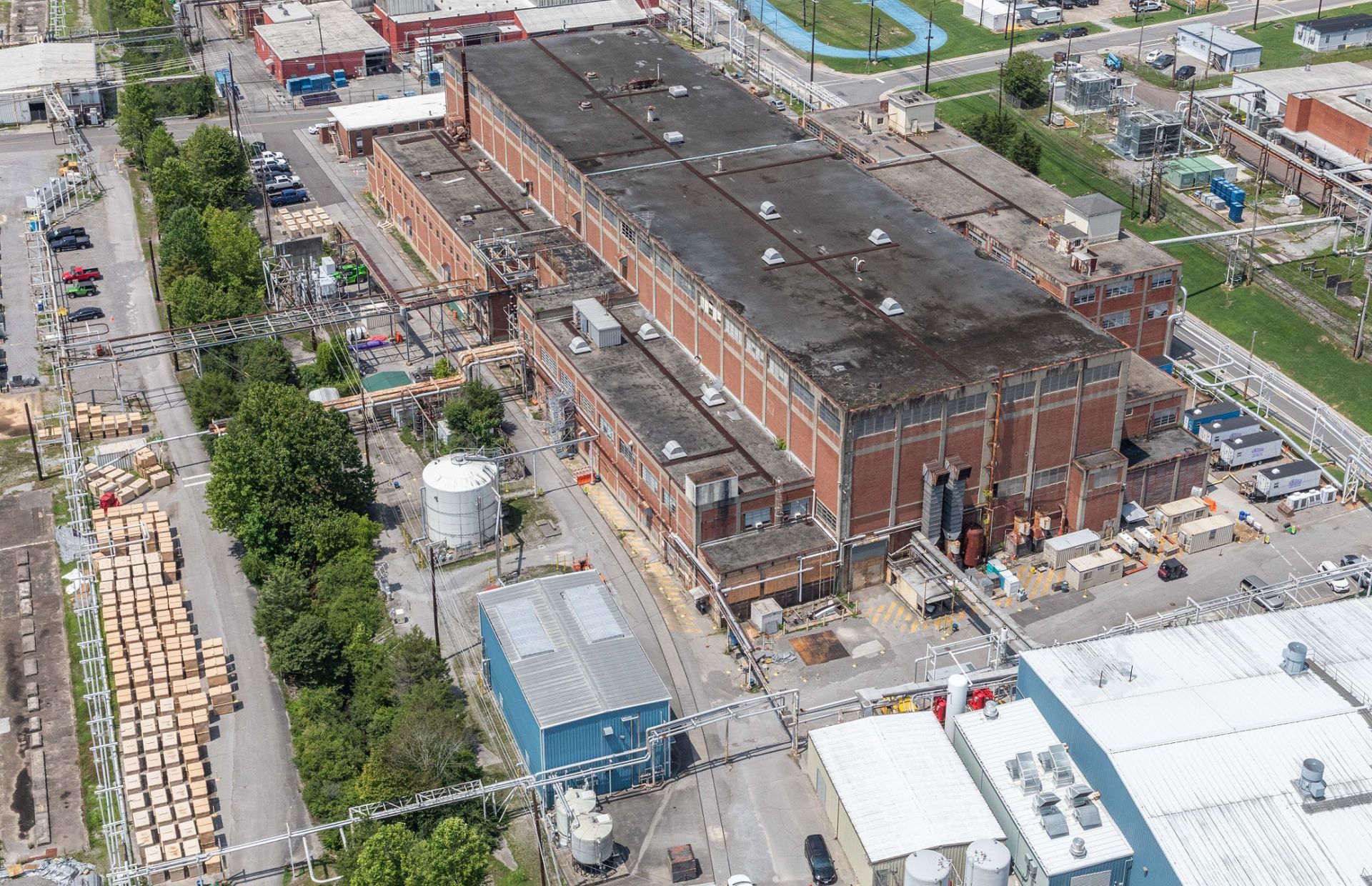
 The Department of Energy, in its
The Department of Energy, in its 